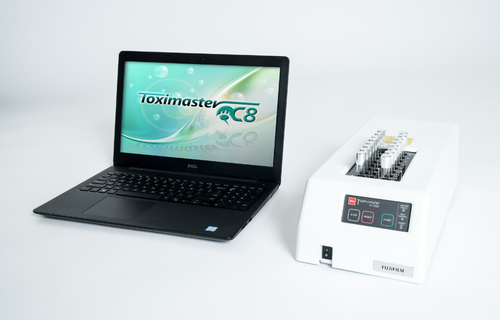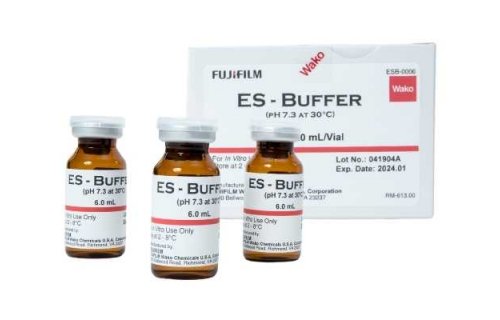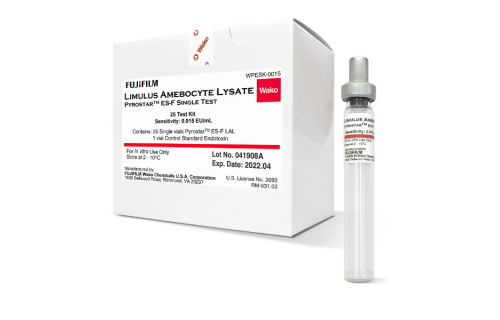Strategies for Determining Endotoxin Limits for Samples and Devices
Bacterial endotoxins, which are primarily released from the outer membranes of gram-negative bacteria during bacterial lysis, are ubiquitous in the environment.1 Accordingly, contamination with small amounts of endotoxin can be expected in raw materials. However, endotoxin contamination of parenteral drug products or medical devices may lead to severe consequences, including the induction of fever, endotoxemia, sepsis, and shock.2 To prevent this risk, parenteral pharmaceutical products and medical devices are examined for the presence of endotoxin contamination capable of inducing negative health effects as a part of their regular screening and quality control.
Generally, the Limulus amebocyte lysate (LAL) assay, including its gel-clot, chromogenic, or turbidimetric versions, is used for endotoxin assessment. Alternative assays, such as the recombinant factor C-based assay or the monocyte activation test may be used in specific situations, in which they have demonstrated advantages.3
The endotoxin limit as a threshold value for dangerous endotoxin contamination
The endotoxin limit is a threshold value for the pyrogenic effects of endotoxins contaminating a sample from an injectable pharmaceutical product or a medical device. The endotoxin limit is calculated in a way that is dependent on the administered product, its dose, and route and time of administration.4
Determining the endotoxin limit for injectable pharmaceutical products
For injectable pharmaceutical products, the endotoxin limit is calculated using the formula K/M, where K represents the threshold pyrogenic (fever-inducing) dose per kg, whereas M represents the dose of the injected drug in units/kg/h.4,5
Setting the endotoxin limit for medical devices
The endotoxin limit for a medical device is determined based on the intended use of the medical device and the types of tissues it will come in contact with within the human body. The medical device may be flushed, immersed, or disassembled to collect an extract or an eluate for endotoxin determination. For extracts from medical devices prepared under specific predetermined conditions and that have direct or indirect contact with the cardiovascular and lymphatic system, the endotoxin limit has been set at 0.5 EU/mL or 20 EU/device. Some devices may need to be additionally treated due to the risk of interference by anticoagulant coating or the presence of heavy metals or particulates.3
Additional considerations for endotoxin limit testing
Considering the need for sample dilution – Generally, samples can be tested without dilution, unless there is an interfering substance in the sample. The maximal dilution of a product, at which the endotoxin limit can be detected is known as the maximum valid dilution (MVD).
Sample storage and handling – The storage and handling conditions may affect the results of sample testing. Therefore, the stability of the assayable endotoxin content under the storage and handling conditions should be assured. Moreover, it should be noted that native and purified endotoxins may react differently.3
Considering sample pooling – In certain instances, samples can be pooled for the determination of bacterial endotoxin limits. Generally, aliquots are collected aseptically and pooled for testing, while the original containers are preserved in case their individual testing becomes necessary. However, samples with initially low MVD and suspensions should not be pooled.3
Literature sources:
- Farhana A, Khan YS. Biochemistry, Lipopolysaccharide. [Updated 2021 Apr 29]. In: StatPearls [Internet]. Treasure Island (FL): StatPearls Publishing; 2021 Jan-. Available from: https://www.ncbi.nlm.nih.gov/books/NBK554414/.
- Sampath VP. Bacterial endotoxin-lipopolysaccharide; structure, function and its role in immunity in vertebrates and invertebrates. Agriculture and Natural Resources, 2018; 52 (2): 115-120. https://doi.org/10.1016/j.anres.2018.08.002.
- Food and Drug Administration. Guidance for Industry: Pyrogen and Endotoxin Testing: Questions and Answers. June 2012. Available online at: https://www.fda.gov/media/83477/download.
- Karen Zink McCullough. Calculating Endotoxin Limits for Drug Products. American Pharmaceutical Review. September 26, 2018.
- European Medicines Agency (EMA) ICH guideline Q4B. Annex 14 to Note for Evaluation and Recommendation of Pharmacopoeial Texts for Use in the ICH Regions on Bacterial Endotoxins Tests – General Chapter. Step 3. September 2010. EMA/CHMP/ICH/529785/2010. Available online at: https://www.ema.europa.eu/en/documents/scientific-guideline/draft-ich-guideline-q4b-annex-14-note-evaluation-recommendation-pharmacopoeial-texts-use-ich-regions_en.pdf.






